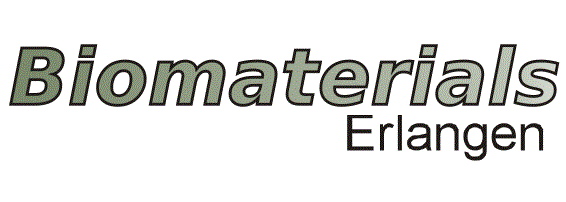Sara Azad Jafarloo
Sara Azad Jafarloo
Masterstudentin
Investigation of ADA-GEL-MBGNs Composite Hydrogel Behavior: Applications in Bioprinting and Skeletal Muscle Tissue Engineering
Betreuer*in: Hsuan-Heng Lu, Prof. Aldo R. Boccaccini
Skeletal muscles are essential for the proper support and mobility of the human body. While minor damage to skeletal muscles can undergo self-repair, significant volumetric muscle loss (VML) exceeds the natural regeneration capacity of skeletal muscles [1]. Bioprinting is an innovative approach in tissue engineering, which allows for the fabrication of complex biomimetic structures with functional properties, with the aim of regeneration of natural tissues such as skeletal muscle tissue. The development of printable bioinks is crucial for achieving a stable porous 3D structure, which supports cell growth and viability [2]. Crosslinked biopolymers, such as alginate dialdehyde-gelatin (ADA-GEL) are potential inks suitable for extrusion based bioprinting, due to their good printability, biocompatibility, biodegradability and supporting structure for cell growth. ADA-GEL hydrogels can also be used as composite hydrogels incorporating mesoporous bioactive glass nanoparticles (MBGNs) to adjust the properties of ADA-GEL hydrogels depending on the application [2,3]. Development and investigation of ADA-GEL-MBGNs composite hydrogels and the optimization of the printing process for tissue engineering applications is the aim of this thesis/project.
[1] B. Langridge, M. Griffin, and P. E. Butler, “Regenerative medicine for skeletal muscle loss: a review of current tissue engineering approaches,” Journal of Materials Science: Materials in Medicine, vol. 32, no. 1. Springer, Jan. 01, 2021. doi: 10.1007/s10856-020-06476-5.
[2] S. Heid et al., “Bioprinting with bioactive alginate dialdehyde-gelatin (ADA-GEL) composite bioinks: Time-dependent in-situ crosslinking via addition of calcium-silicate particles tunes in vitro stability of 3D bioprinted constructs,” Bioprinting, vol. 26, Jun. 2022, doi: 10.1016/j.bprint.2022.e00200.
[3] F. Kurtuldu et al., “Cerium and gallium containing mesoporous bioactive glass nanoparticles for bone regeneration: Bioactivity, biocompatibility and antibacterial activity,” Materials Science and Engineering C, vol. 124, May 2021, doi: 10.1016/j.msec.2021.112050.

